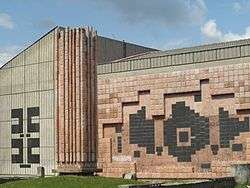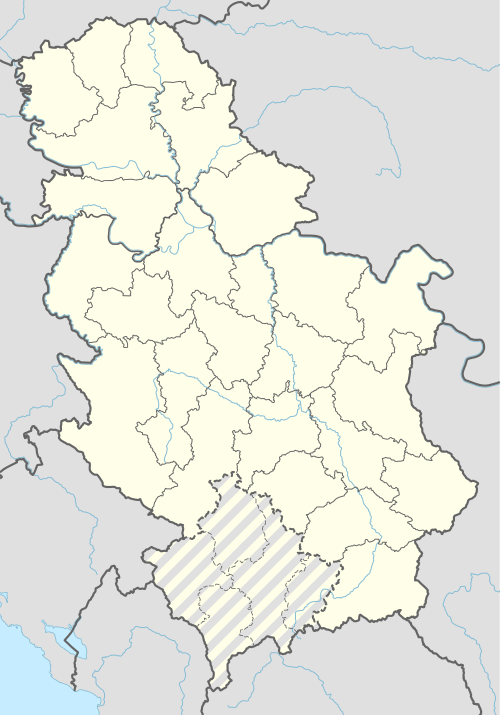Vranić
Vranić (Serbian Cyrillic: Вранић) is a suburban settlement of Belgrad, the capital of Serbia. It is located in the municipality of Barajevo. Vranić is the westernmost settlement in the municipality, located 2 km (1.2 mi) east of the Ibarska magistrala, but as the settlement grew, it reached the highway. Vranić was part of the municipality of Umka which was abolished in 1960 and divided between the municipalities of Čukarica and Barajevo (Vranić and Meljak).
Vranić | |
|---|---|
Suburban settlement | |
 Memorial home in Vranić | |
 Vranić | |
| Coordinates: 44°36′05″N 20°19′34″E | |
| Country | |
| Area | |
| • Total | 26.58 km2 (10.26 sq mi) |
| Population (2011) | |
| • Total | 4,233 |
| • Density | 160/km2 (410/sq mi) |
| Time zone | UTC+1 (CET) |
| • Summer (DST) | UTC+2 (CEST) |
| Year | Pop. | ±% |
|---|---|---|
| 1921 | 2,565 | — |
| 1948 | 2,991 | +16.6% |
| 1953 | 3,051 | +2.0% |
| 1961 | 2,868 | −6.0% |
| 1971 | 2,625 | −8.5% |
| 1981 | 3,044 | +16.0% |
| 1991 | 3,225 | +5.9% |
| 2002 | 3,899 | +20.9% |
| 2011 | 4,233 | +8.6% |
| Source: [2] | ||
History
Wooden church was built in Vranić in the 1823. Under its foundation, an archeological find was discovered, estimated to be 5,000 years old.[3] It was built on the foundations of the older church from the 18th century, which had a role in preparations and organization of the rebellions of Koča's frontier rebellion (1788) and First Serbian Uprising (1804). The church has rectangular base, it was built from oak logs and roofed with wood shingles. With iconostasis and wall in narthex, the interior is divided in three rooms. The church is known for its painted and exquisitely ornamented, carved western doors. The church hosts some 50 artifacts, including icons made by unknown artists but also by the icon painters Ilija Petrović and Nikola Janković, artistic crafts and books from the 17th century, etc. One of the most valuable items is the large carved cross of Hadži-Ruvim from 1800. Being one of the oldest surviving objects of this kind in Serbia, the log cabin was protected by the law as the cultural monument.[4]
Population
It is a rural settlement and, thanks to the proximity of the highway, in the last three decades Vranić has developed into the second most populous settlement in the municipality after the municipal seat of Barajevo. Population of Vranić in 2011 was 4,233.
Sub-settlements
As Vranić grew, it developed several outer sub-settlements (hamlets), like Rašića Kraj and Taraiš.
References
- "Насеља општине Барајево" (pdf). stat.gov.rs (in Serbian). Statistical Office of Serbia. Retrieved 22 October 2019.
- Comparative overview of the number of population in 1948, 1953, 1961, 1971, 1981, 1991, 2002 and 2011 – Data by settlements, page 29. Statistical Office of the Republic of Serbia, Belgrade. 2014. ISBN 978-86-6161-109-4.
- Dimitrije Bukvić (14 April 2013). "Ruralni Beograd - dve trećine prestonice" [Rural Belgrade - two thirds of the capital city] (in Serbian). Politika.
- Branka Vasiljević (10 May 2020). Hramovi od drveta sačuvali veru [Wooden temples preserved faith]. Politika (in Serbian).